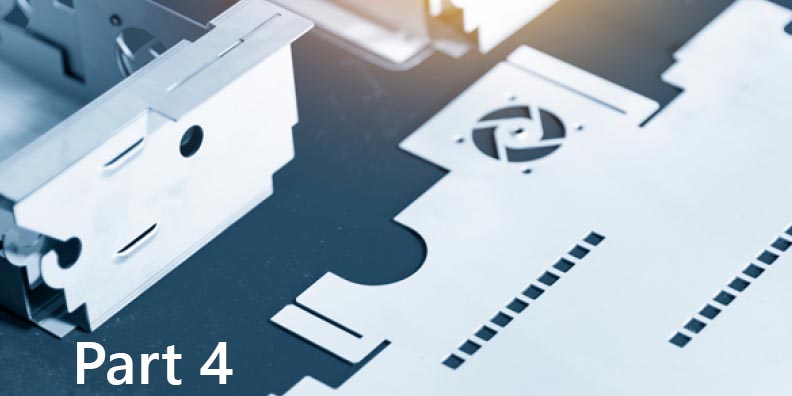Clamping Factors
Following is part four of a larger article originally printed in the July 2019 issue of The Fabricator.
Moving the sheet back and forth in the X direction are a series of clamps at the far end of the table, and that clamping area needs to be considered during programming. Depending on the parts in a job, you might not be able to nest parts efficiently in that area.
The machine’s clamping area can be divided into two elements: (1) the space between the clamps and (2) the space under the clamps. Advanced punch and punch/laser programmers know how to utilize both.
A software’s nesting functions, both for punching and punch/laser operations, can be set to create conservative nest layouts. This gives you greater programming efficiency, because it’s mostly automated. You also might have thicker webs between parts and few or no parts near or under the clamps. It gives you high skeletal integrity, so you’ll have very little chance of error. But you also don’t achieve the highest material yield. This can be ideal for dynamic nest layouts, where you’re nesting on demand. Once the nest layout is made, you’ll never see it again.
But let’s say you have a repeat or blanket order with a consistent, predictable part mix. In this case, it might make sense to create and perfect a static nest—one that runs the same mix of parts arranged in the same place, sheet after sheet. Because the nest doesn’t change, you’ll want to achieve all the material yield you can, while at the same time making the cutting cycle reliable.
How to Achieve Balance
It’s a balancing act, and it isn’t easy. For instance, you might choose to common-line-cut certain components, but you do so knowing that once that part is evacuated down a chute, the remaining skeleton (considering the thickness, length, shape, and placement of its web sections) will have the integrity you need to ensure the operation is stable.
After some experience, you might choose to place parts in between the clamps. After even more experience, you might nest parts under the clamps and program a re-positioning function. This again adds technical complexity. The sheet cannot move or distort as the clamps re-position themselves; and the area where re-clamping occurs needs enough material to ensure the sheet is clamped securely. If not, all parts punched and laser-cut after re-positioning could be out of tolerance.
Schedule a demo to see how SigmaNEST addresses this and other Combo machine programming.
To view the full article, click here.

